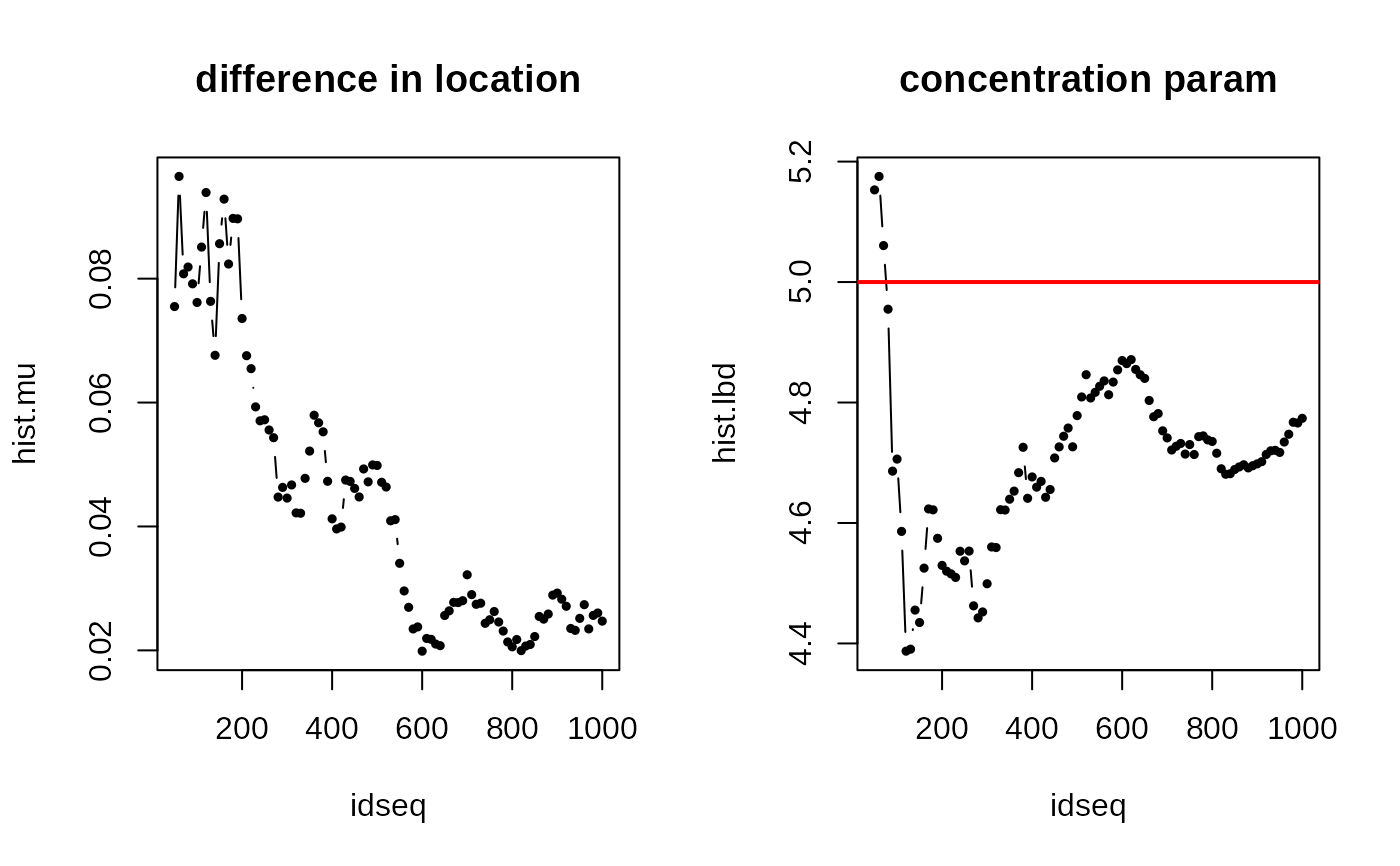We provide tools for an isotropic spherical normal (SN) distributions on a \((p-1)\)-sphere in \(\mathbf{R}^p\) for sampling, density evaluation, and maximum likelihood estimation of the parameters where the density is defined as $$f_{SN}(x; \mu, \lambda) = \frac{1}{Z(\lambda)} \exp \left( -\frac{\lambda}{2} d^2(x,\mu) \right)$$ for location and concentration parameters \(\mu\) and \(\lambda\) respectively and the normalizing constant \(Z(\lambda)\).
Usage
dspnorm(data, mu, lambda, log = FALSE)
rspnorm(n, mu, lambda)
mle.spnorm(data, method = c("Newton", "Halley", "Optimize", "DE"), ...)Arguments
- data
data vectors in form of either an \((n\times p)\) matrix or a length-\(n\) list. See
wrap.spherefor descriptions on supported input types.- mu
a length-\(p\) unit-norm vector of location.
- lambda
a concentration parameter that is positive.
- log
a logical;
TRUEto return log-density,FALSEfor densities without logarithm applied.- n
the number of samples to be generated.
- method
an algorithm name for concentration parameter estimation. It should be one of
"Newton","Halley","Optimize", and"DE"(case sensitive).- ...
extra parameters for computations, including
- maxiter
maximum number of iterations to be run (default:50).
- eps
tolerance level for stopping criterion (default: 1e-5).
Value
dspnorm gives a vector of evaluated densities given samples. rspnorm generates
unit-norm vectors in \(\mathbf{R}^p\) wrapped in a list. mle.spnorm computes MLEs and returns a list
containing estimates of location (mu) and concentration (lambda) parameters.
References
Hauberg S (2018). “Directional Statistics with the Spherical Normal Distribution.” In 2018 21st International Conference on Information Fusion (FUSION), 704–711. ISBN 978-0-9964527-6-2.
You K, Suh C (2022). “Parameter Estimation and Model-Based Clustering with Spherical Normal Distribution on the Unit Hypersphere.” Computational Statistics & Data Analysis, 107457. ISSN 01679473.
Examples
# \donttest{
# -------------------------------------------------------------------
# Example with Spherical Normal Distribution
#
# Given a fixed set of parameters, generate samples and acquire MLEs.
# Especially, we will see the evolution of estimation accuracy.
# -------------------------------------------------------------------
## DEFAULT PARAMETERS
true.mu = c(1,0,0,0,0)
true.lbd = 5
## GENERATE DATA N=1000
big.data = rspnorm(1000, true.mu, true.lbd)
## ITERATE FROM 50 TO 1000 by 10
idseq = seq(from=50, to=1000, by=10)
nseq = length(idseq)
hist.mu = rep(0, nseq)
hist.lbd = rep(0, nseq)
for (i in 1:nseq){
small.data = big.data[1:idseq[i]] # data subsetting
small.MLE = mle.spnorm(small.data) # compute MLE
hist.mu[i] = acos(sum(small.MLE$mu*true.mu)) # difference in mu
hist.lbd[i] = small.MLE$lambda
}
## VISUALIZE
opar <- par(no.readonly=TRUE)
par(mfrow=c(1,2))
plot(idseq, hist.mu, "b", pch=19, cex=0.5, main="difference in location")
plot(idseq, hist.lbd, "b", pch=19, cex=0.5, main="concentration param")
abline(h=true.lbd, lwd=2, col="red")
 par(opar)
# }
par(opar)
# }
